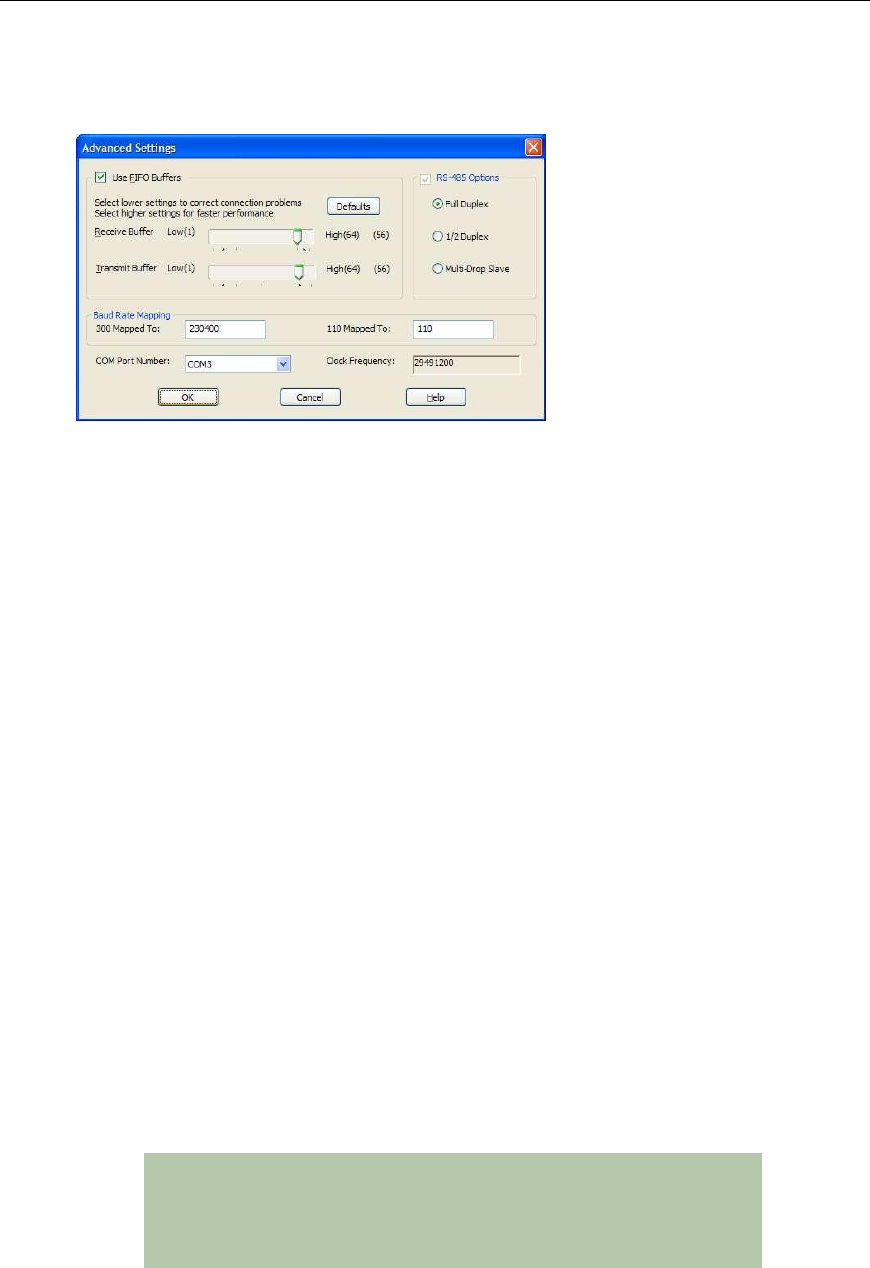User manual
Table Of Contents
- Limited Lifetime Warranty
- Copyright Notice
- Trademark Acknowledgment
- Contact Information
- BlueStorm/Express Installation Overview
- Hardware Configuration
- Interrupts and Memory Address Selection
- RS-232 Electrical Interface
- RS-422/485 Electrical Interface
- Jumper Block Settings
- Tri-state Operation
- Installing the BlueStorm/Express into your system
- Software First Installation
- Hardware First Installation
- Windows XP Installation
- Port Settings
- Advanced Port Settings
- Software Settings for RS-422/485
- Specifications

Connect Tech BlueStorm/Express User Manual
Revision 0.02
19
Advanced Port Settings
Use FIFO Buffers
For performance reasons, it is preferred that the FIFO buffers on the UART be used. When the
Use FIFO Buffers option is enabled, the UART will be more efficient at moving data. Other
functions such as flow control will be managed by the UART when this option is enabled.
In some cases you may need to disable the FIFO buffers. This issue usually happens when the
connected equipment cannot deal with data that is sent with minimal gaps between characters, or
cases where the EscapeCommFunction (PortHandle, SETXOFF) function is used.
Receive and Transmit FIFO Settings
These sliders adjust the size of UART FIFO levels used by the CTI PCI Express UART serial
ports. You obtain more buffering the further you move the slider to the right. This results in
higher throughput, and lower load on the system. Note that high buffer levels can cause
communication problems with some applications.
Usually the best setting is to have the receive buffer set at one notch blow the highest setting and
the transmit buffer at the highest setting.
Software Settings for RS-422/485
RS-422/485 ports have the following options available:
Full Duplex - In this mode, TxD & RxD are active all the time. This mode is typically used in
point-to-point situations much like RS-232. RTS and CTS can be used along with the data
signals.
Half Duplex - In this mode the TxD line driver is only enabled when data is transmitted, and
RxD is disabled when data is being transmitted. This mode is typically used in either point-to-
point (2 wire) connections OR in multi-drop (2 wire) bussed connections. CTS and RTS are not
usually used with this configuration.
Multi-drop - In this mode the TxD line driver is only enabled when data is transmitted and RxD
is enabled all the time. This mode is typically used in multi-drop (4 wire) connections. RTS and
CTS are not usually used in this configuration.
Note: RS-485 Options are available if your BlueStorm/Express card
is built or configured as RS-485, but does not mean the port is
currently set this way. Check your card and ensure the jumpers are
configured for RS-485 operation before changing the software
setting.










